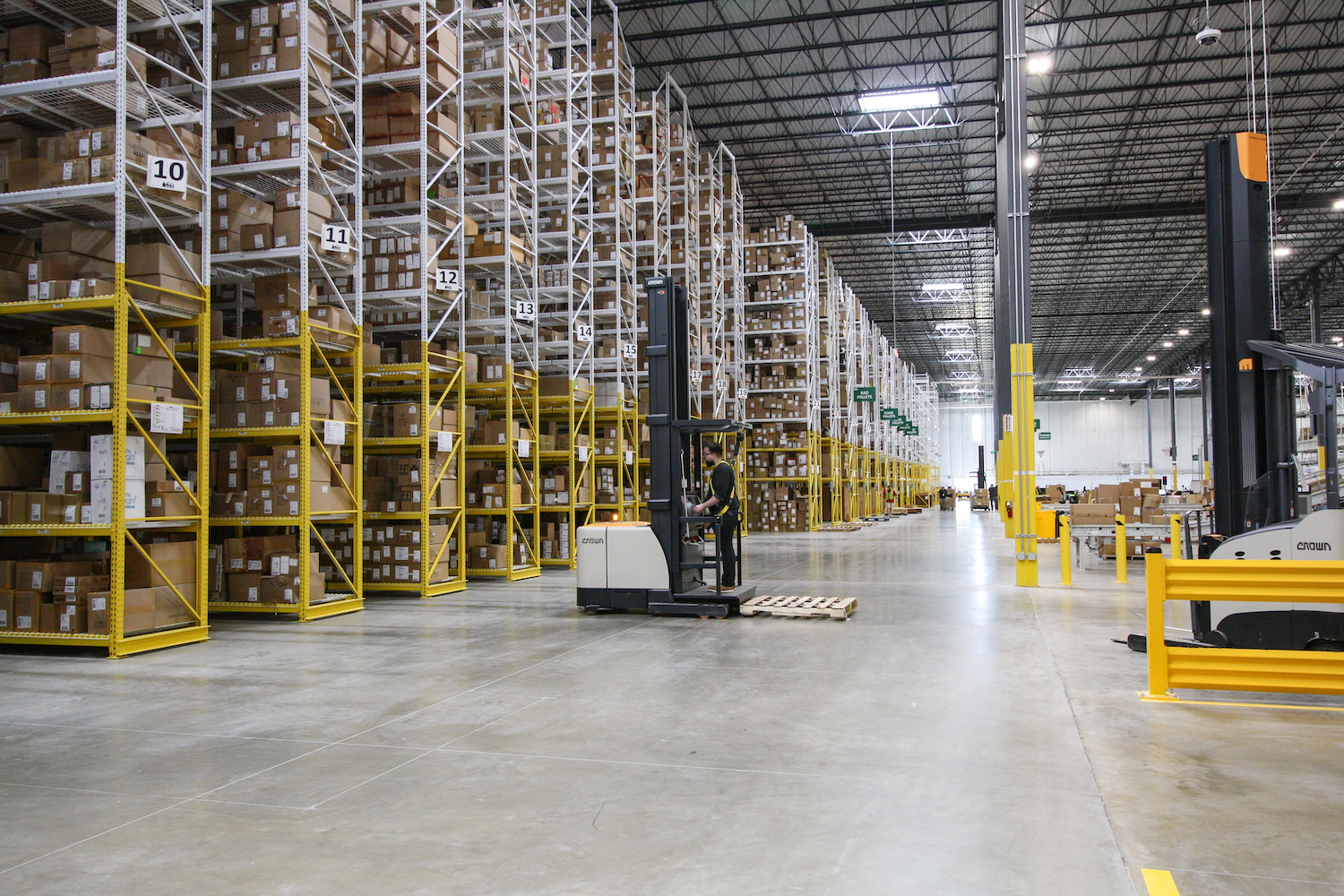
REI's new distribution center in Lebanon, Tennessee, ships goods to more than 60 stores in the area. (Image courtesy of REI Co-op)
In an economy that often pits people against the planet, outdoor recreation retailer REI is trying out a different path with its new distribution center in Lebanon, Tennessee. The center, which ships goods to more than 60 stores in the area, was specifically designed to address both worker well-being and environmental impact simultaneously.
“At its core, if we start with climate, we're solving for a healthy environment, right? A healthy world well into the future that supports all types of ecosystems,” said Andrew Dempsey, senior manager of sustainability at REI. “But it's really the intersection of that in support of people. That's an outcome that we feel is most important.” It all goes back to REI’s core mission, Dempsey said, “which is to get folks outside.”
A changing climate does not bode well for outdoor activity
The future of outdoor recreation is undoubtedly under threat as the climate crisis worsens. With rates of extreme temperatures intensifying, being active outside is hazardous more and more days per year — even for healthy people. It’s not just heat waves or extreme cold that threaten recreation. Increasing wildfire risks put recreational areas and nearby outdoor enthusiasts in danger, while the smoke from those fires further contributes to negative health effects. Bigger storms, longer droughts, and changing rainfall patterns that lead to flooding are all contributing to an untenable situation for those who want to enjoy the great outdoors. And it’s bad for the businesses that supply them with gear, too.
“We do feel it's an existential threat to the future of our business and to the future of life outside,” Dempsey said. REI’s response to this is an all-hands-on-deck approach, which is why the company paid special attention to every aspect of the design for its new distribution center.
“We really did seek to consider the entire lifecycle carbon impacts of the building, from design through construction and operation,” he said. “We looked at the embodied carbon of a couple of major material types within the building — concrete and steel — and worked with our builder to [source] materials for both of those that have lower embodied carbon than would have been their standard in the area.”
Harnessing renewable energy while increasing efficiency at the new REI distribution center
Normally buildings like this are heated with natural gas. The Lebanon distribution center has a 1.1-megawatt rooftop solar array that meets about two-thirds of its energy needs. The remainder is procured from a renewable energy provider. “We're not burning any fossil fuels on-site. We have electric heat pump heating systems,” Dempsey said. “So 100 percent electric, 100 percent renewable energy.”
Not only is all of the energy renewable, but the building was also designed with efficiency in mind — beating code requirements by over 30 percent. “We feel like we've built a building that sets up a best-in-class sample for warehouses and for this building type in fighting the climate crisis,” he said.
Bringing the outdoors into the workday
Using electric forklifts and conveyor belts with sensors that only run when they are moving product makes the new distribution center much quieter than what's typical, which is better for employees for whom noise can take a toll. The 90 skylights on the roof — twice as many as the company’s last distribution center — are also a big part of creating a more natural environment inside. Adding more windows is a simple thing companies can do to nurture a connection to the outdoors, Dempsey said.
“When you're in these spaces it feels different. Natural daylight feels different. You have a connection to where the sun is, what time of day it is outside,” he said. “Typically, warehouses are dark, cavernous spaces. Where you don't have a connection to the outside. You have no access to views, no access to daylight. And you're working in a space that, from a basic human level, may not be all that comfortable.”

A walking and biking trail and habitat restoration are two projects currently in development on the campus to give employees more access to the outdoors. Covered bike racks encourage carbon-free commutes, and the showers and changing rooms in the employee gym make doing so a more comfortable experience for everyone. There are also six charging stations available for workers who own electric vehicles, Dempsey said.
Raising the bar for distribution centers
REI is not immune to the issues like layoffs and employee dissatisfaction that are prevalent across sectors like retail right now. But this new building design is raising the bar for both employee well-being and environmental responsibility at distribution centers.
Though many retailers may be relatively insulated from the effects of the climate crisis compared to brands that rely on outdoor activity for sales, like REI, eventually all bottom lines will be affected. It would be wise for more distributors to design their buildings to mitigate the climate crisis. Doing so while valuing employee well-being will pay dividends in tenure and productivity.

Riya Anne Polcastro is an author, photographer and adventurer based out of Baja California Sur, México. She enjoys writing just about anything, from gritty fiction to business and environmental issues. She is especially interested in how sustainability can be harnessed to encourage economic and environmental equity between the Global South and North. One day she hopes to travel the world with nothing but a backpack and her trusty laptop.













